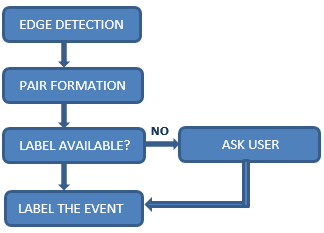
Machine Learning to make Smart Meters smarter
Published on August 19, 2019

Meet Patel
Machine Learning Engineer
Introduction:
Disaggregation of total energy consumption of a household into individual appliances, using smart energy meters and big data analytics, can deepen energy feedback, provide real time health monitoring and eventually can also be used for a well-informed energy-aware remote home automation. One of the techniques used in this area is called non-intrusive appliance load monitoring (NILM), first introduced by George Hart in the late 1980s. While the technology is not new, as research is being carried out in this field since the past 25 years, there are still many unsolved problems with respect to its practicality and effectiveness at high sampling rates.
‘Smart homes’ is the future and SustLabs is pioneering a transition to this concept through its product OHM'
Ohm uses adaptive machine learning models, trained on internally generated datasets down sampled at a 3-second resolution. Individual appliances like Geyser, Ac, Oven, Fan, Tube light, Bulb, Oven, Washing machine, Iron, Kettle etc. from 50 different houses are intensively studied and thus an extensive database comprising of their features is created. Various machine learning algorithms, both supervised and unsupervised, like Random forest, KNN, SVM, Gaussian Naïve Bayes, Multinomial, Decision Tree etc. have been implemented on the available dataset. The best classification results, on an experiment on a small test dataset, were produced by Random Forest with an accuracy of 99.97% on test data followed by KNN – 99.64%, Gaussian NB - 87.82% and the least was provided by SVM which was 81.84%.
The next step in the process is to identify whether an event has taken place or not which is done using edge detection techniques like Moving averages, Bayesian change point detection etc. Once the edge is detected, it is classified as whether it is an “ON” event or “OFF” event. Each positive event corresponds to a particular appliance being turned “ON”, while the negative one corresponds to “OFF”.

SustLabs, through its product OHM, is engaged in monitoring electricity consumption on a real time basis that has multiple positive outcomes such as accurate forecasting of electricity bill, preventive care and servicing of heavy appliances and maintaining a record of all the appliances at your home at a single place and thus fulfilling the need for a sustainable living through optimization of electricity consumption at individual home level.